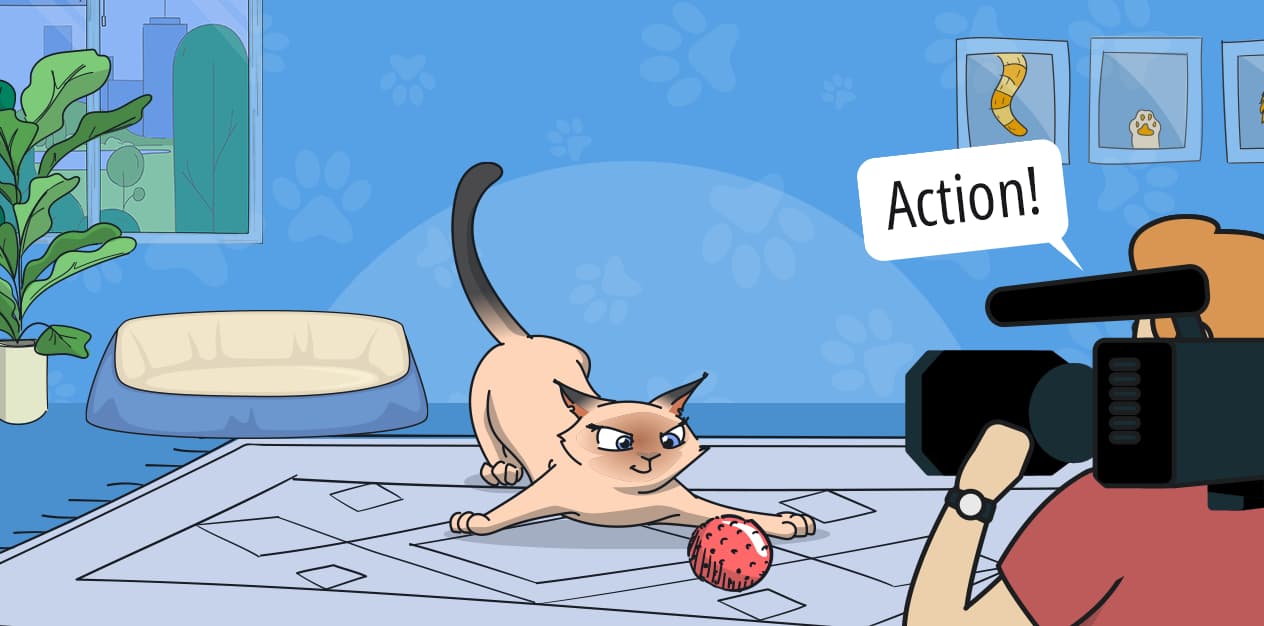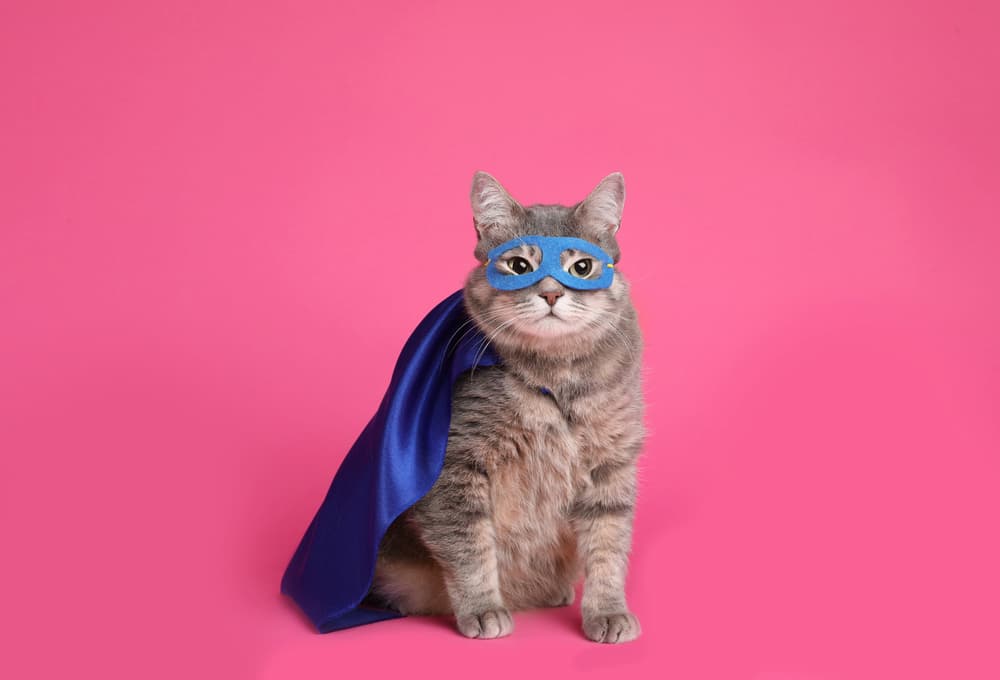

The Year of the Cat: Everything You Need to Know About the Fascinating Lives of Female Cats
Female cats are individualistic, strong, and independent. They live longer than male cats and can carry up to four kittens (which may not even be from the same partner) in one litter. It’s time to put female cats on a pedestal and dive a little into their fascinating lives. Girl power at its best.

Writer Jannah Berkley
7 min read

Independent, calm, and less territorial: characteristics of the female cat
Cats are indeed individualistic creatures and their behavior is influenced by the conditions in which they’re raised as much as by their gender. But some features are more present in female cats than in males. For example, female cats tend to be calmer and more independent than males, so they have no problem keeping themselves busy when they’re home alone for the whole day. Some might describe them as colder or more distant than males. Well, not when they’re in heat, we guess… but you can read about that later.
Female cats also tend to be less territorial and aggressive than males, unless they’re pregnant or have kittens. In that case, maternal instincts kick in and we must be careful approaching their kittens when they’re around. Male cats tend to be more active (even at night), play more with humans and other cats, and also create more “alliances” with other cats. Whether related or not, female cats also tend to live longer than males.

What happens to cats in heat? Where did the calm cat you know and love go?
If you’re wondering how the phrase “sex kitten” came about, you’ve probably never seen a cat in heat before.
As her estrous period starts, the female feline’s behavior begins to drastically change. She begins to roll around sensually, teasing by raising her butt, and howling in a way that makes her owner wonder where their quiet and calm cat has gone. In many cases, those aforementioned pet owners don’t just wonder to themselves, but run to the vet to try to figure out what’s going on.
Not on fire, but in heat
What’s really going on is the fascinating process of heat. Essentially, the female cat begins to emit a scent that attracts males from afar. But as all the males start to gather, she’ll tease them for several days and won’t let them come near her. Then she just stands by and watches them fight over her in a mad howling battle. This is her way of recognizing which cat is strong and deserving enough to be the father of her kittens.
The act of mating itself lasts between a few seconds and a few minutes at most, during which the male climbs on top of the female from behind and fixes her by biting the nape of her neck. At this stage, pain relief morphine-like substances are released into her bloodstream and make her feel at ease.
And what happens once the act is over? The female cat turns around abruptly and slaps her partner. The act of a true queen.
4 fetuses in one pregnancy – not necessarily from the same father
This whole show that the cat puts on during the heat period is meant to serve one clear purpose – she wants to get pregnant as quickly as possible. Cats reach sexual maturity at the age of 5-6 months on average and can get pregnant that young. If they’re not sterilized, they’ll be able to conceive several times in their life and give birth to 3-4 or more kittens each time. Only at around 8 years old does their fertility level start decreasing.
The estrous period in a female cat is a seasonal thing that takes place starting in mid-winter and is intended for birthing a litter in early spring. Female cats have a small part of their brain that’s sensitive to light and allows them to measure the length of the day. So when the days begin to shorten, a hormonal message is sent to the ovaries to start working. Cats need a minimum of 10-12 hours of light a day for their ovaries to function and for them to become pregnant. This means that sometimes, the estrous cycle can go wrong due to increased exposure to artificial light sources, such as in cities. It’s important to understand that once the female cat has started the heat season, she has a precise reproductive mechanism that ensures that by the end of summer, she’ll become a mother. At an almost 100% success rate. Amazing, isn’t it?
And there’s another interesting fact about the cat’s eggs, which can only be found in nature with female cats and female camels. This is called “induced ovulation”. Unlike other mammals, including humans, a cat will not ovulate without mating. The mature eggs of the cat remain at the ready inside the ovary, and during the mechanical stimulation of mating itself, a signal goes out to tell the ovary, “Go ahead, release the eggs!”. Once the cat is impregnated, the pregnancy will last about two months and will include 3-4 embryos on average. A cat can carry offspring of more than one male cat in the same pregnancy if she mated with another cat near ovulation. The signs of pregnancy can appear after 16-20 days and include swollen nipples, increased appetite, sudden weight gain, as well as changes in behavior.
Sterilization: pros, cons and what to expect if you decide to go for it
The sterilization process has quite a few advantages. On a health level, sterilization can significantly reduce the chance of your cat getting mammary tumors, which are considered the third most common cancer in cats. If you choose sterilization, it’s best to do it before the development of the breast tissue (towards the end of puberty). In most cats, this happens around the age of 5-6 months. Sterilization also prevents tumors of the reproductive system, uterus, and ovaries as well as uterine inflammations that can occur around the estrous and the littering phase. It can reduce or aid in the treatment of several diseases that are not related to the reproductive system, such as diabetes, too.
An unsterilized cat will most likely give birth to a double-digit number of kittens in her lifetime. This means you’ll either need to find a home for them, or they’ll end up on the street. Street cats only have a 50% chance of surviving their first year of life due to diseases, accidents, attacks, and the danger of predators. So, if you have no interest in becoming the grandparent of dozens of kittens, you should sterilize your female cat around the age of six months. In some large breeds, it’s recommended to wait until a later age for them to complete their normal development. Consult your veterinarian.
Sterilization surgery is performed under full anesthesia. Through an incision in the center of the abdomen or side of the body, the ovaries and the uterus are commonly removed. Before the procedure, the cat should be fasted and it’s also recommended to perform blood tests, to make sure that they’re indeed fit to go through the procedure. If there aren’t any unexpected complications, the cat can be released to its owner after a few hours of recovery, usually with instructions to administer pain relief medication and continue recovery at home. Cats are usually back to their normal selves within a day or two but require 2 weeks of restriction while they fully heal..
Pet medical insurance may not cover the sterilization itself, but it will help support the treatment expenses for diseases originating from the cat’s reproductive system. One click and you’re covered.





We offer the most
comprehensive coverage
out there
car with a spare tire for life’s bumps.
Having Animalia is like a pimped-out
Rolls Royce with a swimming pool
in the trunk.



Get your pet insurance quote
Pet type
- Dog
- Cat
What is your pet's name?
Zip code






